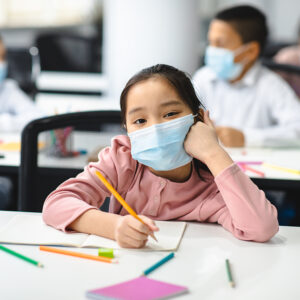Few things are more sickening than the realization that something you disagree with will happen to your child and there is nothing you can do about it. Parents get this, are speaking up, and are ready for big change.
“COVID has broken you people, and it’s disgusting,” said Central Bucks School Director John Gamble in his last meeting before resigning his post in August. Central Bucks became one of several epicenters of controversy as Pennsylvania schools weighed masking policies over the summer, and this statement from Gamble underscores a dramatic but important question amidst the anger: Has COVID-19 “broken” us?
I think not.
An August Axios poll shows 56 percent of Pennsylvania parents support mask mandates while 44 percent do not. So, yes, there is a bitter divide among Pennsylvanian parents, but that disagreement does not indicate that one side is broken.
A better question is: What’s really behind the anger and frustration?
And the true answer: Parents feel helpless!
Whether parents are concerned about COVID-19 spread from a lack of masking, or the mental harm masking causes children, they feel boxed in. And few things are more sickening than the realization that something you disagree with will happen to your child and there is nothing you can do about it. It’s the 2020 shutdowns all over again.
Yet, there is a way to alleviate the concerns of parents on both sides of the COVID wars: Give all parents the power to control the “where” and “how” of their children’s education.
Neither the Gov. Tom Wolf model of mandating masks for all schools nor the Gov. Ron DiSantis model of prohibiting mask mandates is the solution. Instead, the answer lies in a model that lets parents choose.
It’s delusional to think that district public school system can successfully accommodate every concern and belief of the 1.6 million Pennsylvania kids they serve. It’s also delusional to expect the parents of those 1.6 million kids to relinquish their concerns and beliefs to fit the unyielding requirements of districts and the state.
Parents get this, and they are ready for big change. In fact, polling shows 80 percent of Americans support giving families more education options.
Since the beginning of the pandemic, five states have started Education Opportunity Accounts (EOAs). These accounts let parents distribute state taxpayer dollars set aside for their child. Funds can go to tuition or curriculum, therapy, tutoring, and other education uses.
Some states are also creating temporary COVID programs designed to empower parents. In Arizona, the state earmarked $10 million for the COVID Educational Benefit Recovery program. The benefit is a one-time $7,000 EOA. In less than two months Arizona parents started 2,500 online applications, more than the present funds can cover.
This isn’t a partisan trend. The Wall Street Journal found 82 percent of Democrats would want the ability to send taxpayer-funded education dollars to a private school if their public school did not mandate masks.
And in Pennsylvania, education choice via EOA’s polled 73 percent before the pandemic. In other words, COVID-19 is simply accelerating what was slowly happening in K–12 education.
That’s where Excellent Education for All (House Bill 1) comes into play. House Bill 1 is a sweeping bill that gives parents options if they’re unhappy with the difficult decisions local school districts make.
The bill expands the wildly successful education tax credit programs that boasts a waiting list of applicants and donors. The bill protects pandemic learning pods from meaningless regulation and establishes Education Opportunity Accounts (EOAs). These EOAs would give parents power over state education funding meant for their child, enabling them to use it at their own discretion for certain education expenses.
When it comes to schools, our state splits on masks, splits on vaccinations, and splits on social distancing. But that does not mean anyone should be labelled as broken and dismissed in favor of a forced consensus. Instead, these arguments at school board meetings show that families want the power to choose what happens to their children. And therein lies the true consensus.
It’s time for parents and children to be the center of education.


